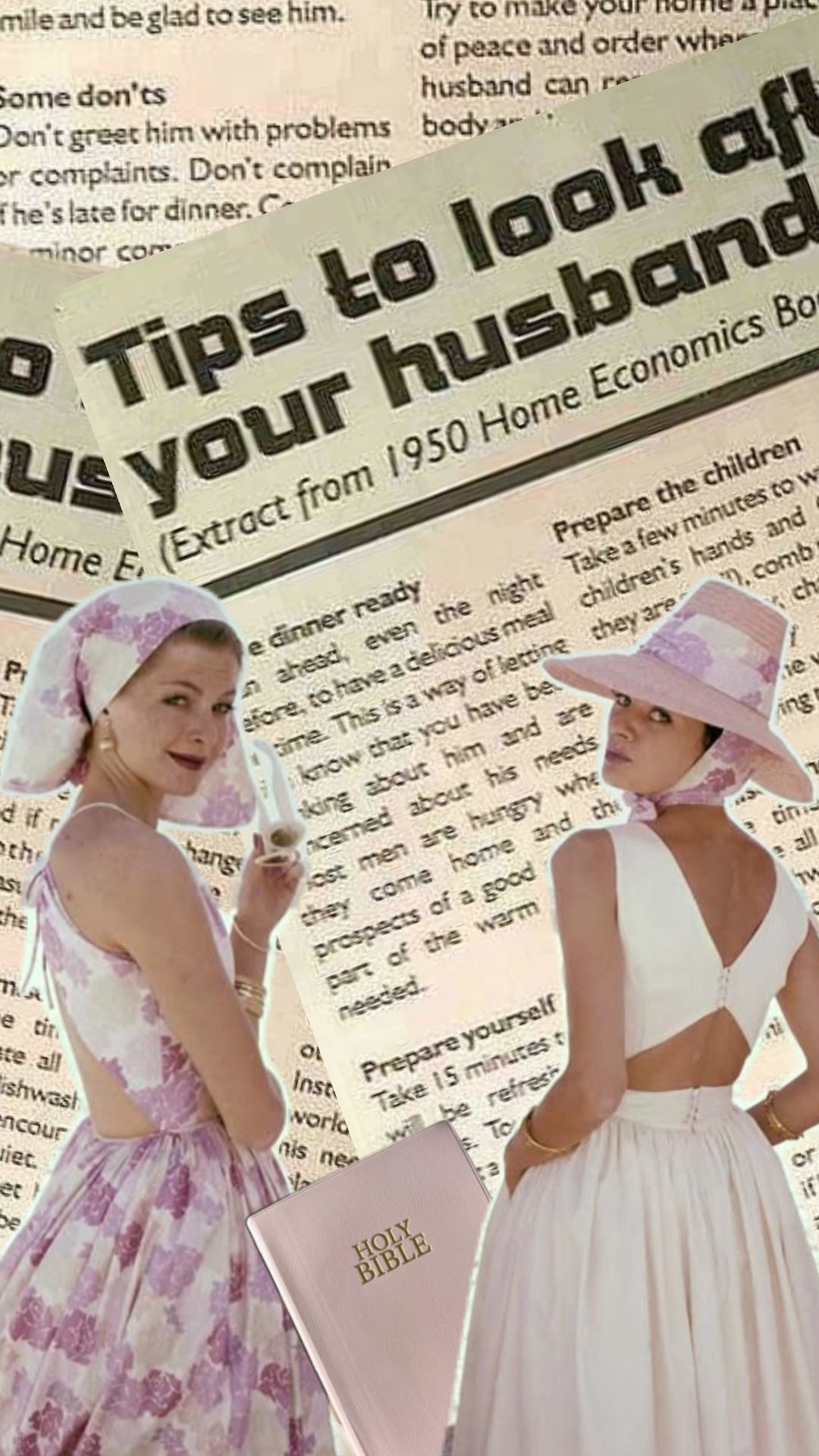we’re all opting out—but we’re not opting for the same future
the quiet war between tradwives and soft girls—and why so many of us don’t see ourselves in either
a little audio note about why I wrote this essay.🤎
Some women dream of pickling onions in sexy milkmaid dresses, filtered through Instagram presets with names like, ‘Wifey Material.’ Yet others aspire to drink $18 oat milk matchas in silk sarongs at the Four Seasons Bali, manifesting their next destination.
Both are soft. Both are aesthetic. Both are making me question my entire life.
One wraps femininity in acts of care for others. The other, in radical care for the self. But both movements grow from the same root system: opt-out culture. And the timing is no coincidence either. They are parallel reactions to the same broken system—just with wildly different solutions.
What does it mean that these two responses are rising at the same time? Who gets to choose softness vs. service? Leisure over labor? And how do we protect the desire to live differently… without having it reduced to aesthetics, politics, or patriarchy?
You scroll and see it: one TikTok shows a glowing TradWife lovingly folding laundry from the clothesline while her kids run barefoot through in the yard. Swipe again, and now it’s a soft girl in her glow-up era, fitted in Alō athleisure wear and sipping chlorophyll water in an Architectural Digest-worthy kitchen.
What’s wild is that these seemingly opposing trends—TradWives and soft girls—are rising at the same moment. Different vibes. Same timeline. And that tells me there’s something deeper going on.
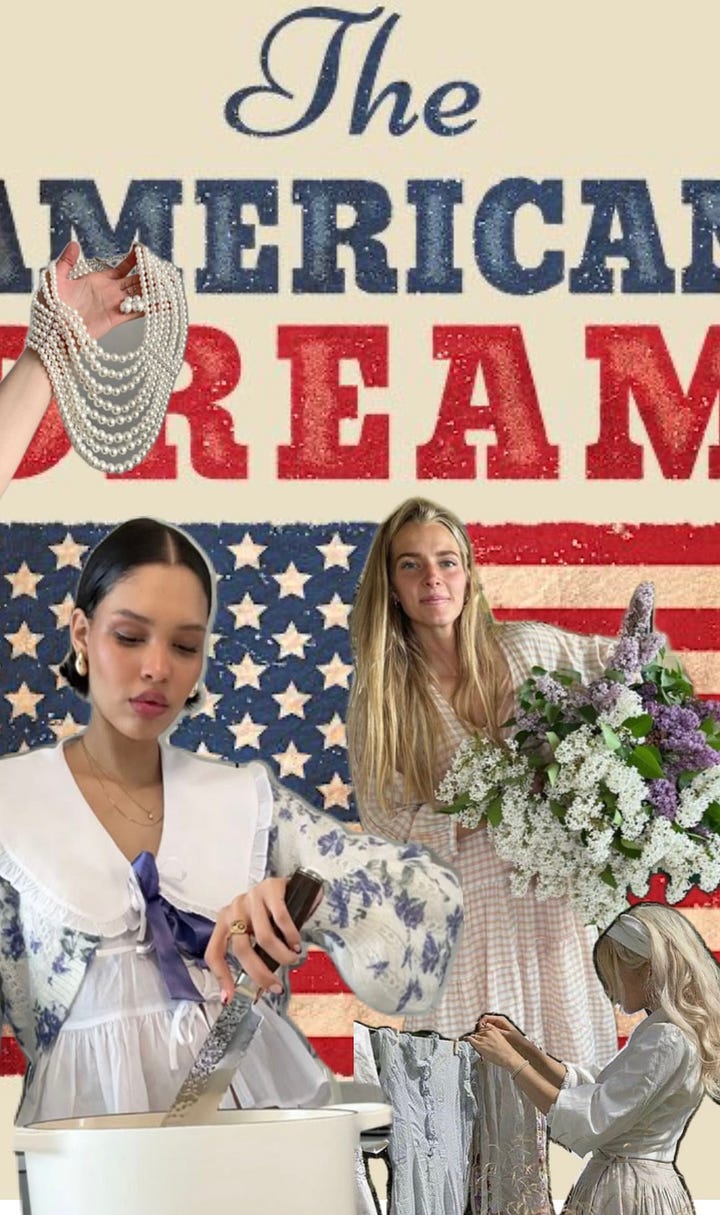
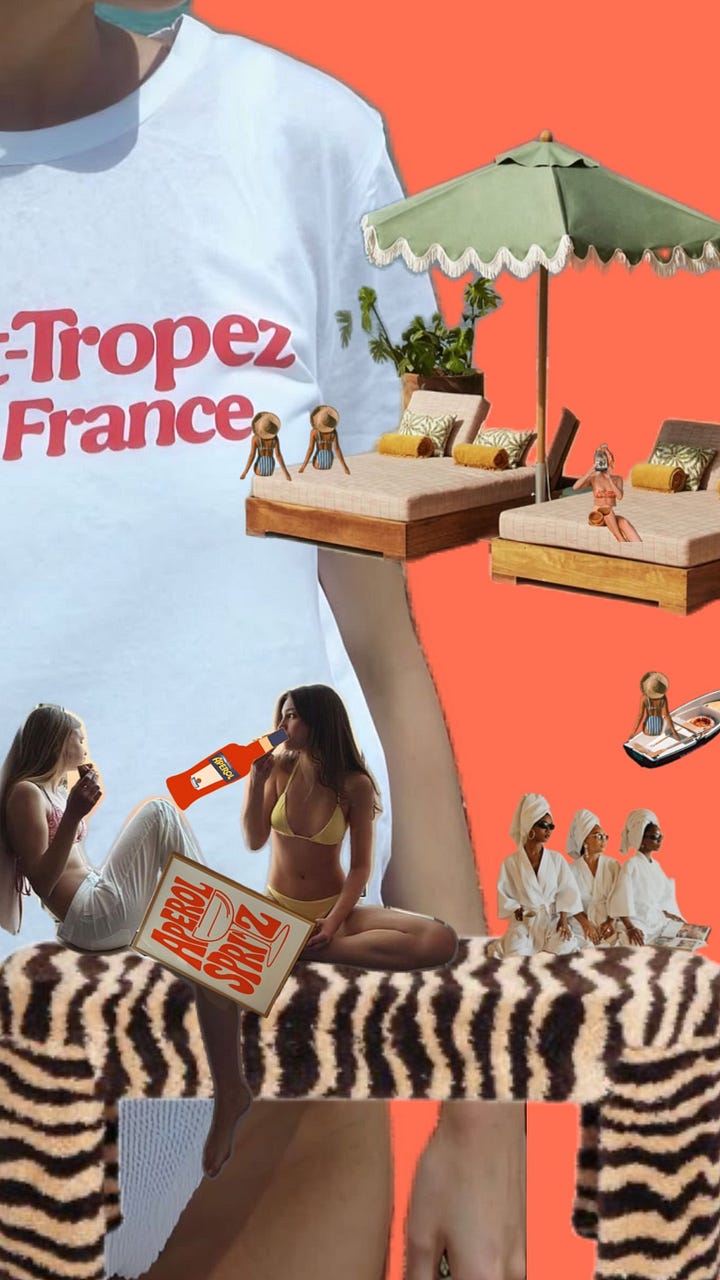
Let’s talk about what’s actually trending. On one side, you have the TradWife life—all slow living, floral aprons, and submission-as-serenity. Think: home-cooked meals, obedient femininity, Christian homemaking content wrapped in pastel filters. The message is clear: A woman’s place is in the home—and that’s beautiful.
On the other, there’s the soft girl—not to be confused or conflated with soft life. (I’ll explain in a minute). Soft girls are in theory about self-care and empowerment but—commodification. It’s become about aesthetics, muted color palettes, spa days, world travel, and content full of quotes like, ‘know your worth.” Like, literally know your worth, Sis—luxury and leisure are couched in this version of softness and the goal is look expensive.
One leans traditional. One leans less so. Or does it? Maybe they’re just different shades of the same pink patriarchy.
“What we’re seeing online are polished performances—extreme versions of two very different escapes.”
Tradwife content is often rooted in rigid gender roles—and sometimes religious or political doctrine. It sells control as comfort. Submission as peace. A return to “simpler times” that were only simple for a select few.
Soft girl content, on the other hand, is often filtered through wealth and luxury. It can feel less like a mental health strategy and more like an aesthetic upgrade.
Most of us aren’t living in either of these extremes. We’re just watching them—and wondering what it means for the rest of us. But I’ve been taking notes.
Soft life has been co-opted.
What started in the Nigerian influencer community as a declaration: “I choose the soft life”—a life not hardened by grind culture and rat races—has, in many ways, been reduced to an aesthetic.
From choosing ease to being chosen. From self-resourced rest to being cared for by a man who provides it. And somewhere in there, the boundary between softness and submission starts to blur. What began as resistance is now, more often than not, performed as a rebrand of dependence.
You see it now in the rise of the soft girl in her soft girl era: curated vulnerability, crying selfies, and a pink-filtered performance of emotion.
One is about reclaiming peace. The other is about posting it.
what are TradWives and soft girls really trying to opt out of?
To recap, we’re really watching three different movements trend at the same time:
TradWife culture is rooted in traditional gender roles—where femininity is expressed through domesticity, submission, and service to a male partner. Think aprons, homemaking, obedience framed as elegance.
Soft life, in its original form, is something else entirely. It emerged from Nigerian influencers as a rejection of grind culture. It’s about choosing rest and ease. Leisure and material things are definitely in the mix but never central because it’s personal rather than performative.
Soft girls—an offshoot of the original soft life—hijacked the term, repackaging “soft” as hyper-femininity, luxury, and looking expensive. What started as rest became a performance.
But despite their differences, they all respond to the same cultural exhaustion. And ask the same question in different ways: How do I build a fulfilling life that doesn’t break me?
Neither movement started out as a performance. Each offered women a way to live with more intention—just in very different forms. Even now, underneath the content and aesthetics, you can still feel the truth in what they were reaching for—a life that feels more sustainable. Both are responses to a system that never made space for ease, or care, or choice.
Soft life says: step away from the labor.
TradWife life says: transform the labor into meaning.
Soft life is about rest, boundaries, ease, and self-prioritization. At its roots it doesn’t remove labor—it just decentralizes it. It makes space for pleasure, slowness, and care without needing to justify it through productivity.
Tradwife life doesn’t remove labor either—it actually doubles down on it. But it wraps that labor in something that feels sacred. Purposeful. Predictable. And for many women, that tradeoff feels worth it.
And yes, race and class still shape access to this choice. The TradWife lifestyle may be dominated by White women, but the reasons women of all backgrounds opt in are layered—economic, emotional, cultural, and spiritual.
Women opt into “tradwife” life for many reasons—sometimes political, but often deeply personal. Some are responding to the rising cost of living and a system that offers little support for working mothers. Some are disillusioned with careers that promised empowerment but delivered burnout. Some are simply drawn to the predictability of domestic rhythms—and want to be seen and valued for it. Many express nostalgia for the 1950s—not for the politics, but for the promise of being valued as a caregiver. Of being celebrated for building a home. Of knowing your role—and knowing it mattered.
Women opt into soft life for different—but equally valid—reasons. For many Black women, it began as a survival strategy. It pushed back on the myth of the “strong Black woman,” saying: I deserve rest, too. The idea that rest wasn’t a luxury, it was a radical act of self-care. An act of softness in a world that demanded hardness to survive. For others, especially millennials and Gen X like me, it came after decades of chasing career success while doing all the invisible work—carrying family, community, and generational expectations.
Neither movement started out as a performance. Each offered women a way to live with more intention—just in very different forms. Even now, underneath the content and aesthetics, you can still feel the truth in what they were reaching for—a life that feels more sustainable. Both are responses to a system that never made space for ease, or care, or choice.
And soft girls? They sit somewhere in the middle—blurring the line between rest and romantic dependence. A soft pivot from self-prioritization to submission, one luxury link at a time. That shift doesn’t come out of nowhere. Once softness becomes a lifestyle brand, it’s not a huge leap from soft girl to TradWife.
As one Gen Z woman put it in a BuzzFeed piece exploring why Gen Zers are embracing the TradWife trend:
“I wanted to be a tradwife just a few years ago…”
As one Gen Z woman put it in a BuzzFeed piece exploring why Gen Zers are embracing the tradwife trend:
“I wanted to be a tradwife just a few years ago. That desire came from romanticizing the past—and dissatisfaction with how women are treated in both work and education.”
And for some, the desire to opt out isn’t ideological—it’s protective.
“We watched our mothers and grandmothers try to be superwomen—and it broke them,” another woman reflected. “Some Gen Z women feel like maybe the 1950s had it figured out. Just raise the kids, take care of the house, look cute. But that wasn’t peace. That was a trap.”
The 2002 film Mona Lisa Smiles captured this sentiment well through Julia Stiles’ character, Joan, who chooses marriage over Yale Law School. When her professor, played by Juli Robert’s, challenges her, she says: “This is what I want. I want a home. I want a family. That doesn’t make me less smart.”
And maybe she’s right. Maybe choosing home isn’t giving up. (Are we collectively over ‘having it all’ yet?)
But when the only options feel like submission or burnout, it’s fair to ask: Is it really a choice? And for others, it’s not about choosing submission—it’s about recovering from burnout.
In the same BuzzFeed article, a former journalist shared her perspective:
“Something about it is comforting, I guess. I used to be a passionate workaholic journalist, but I saw so much despair and loss. It ruined my mental health. The ‘tradwife’ trend almost reminds me to slow down and get back to things I enjoy—cooking, baking, gardening, kids.”
It’s tempting to label that as TradWife energy. But is it?
Because what she’s describing—reclaiming time, joy, and presence—isn’t submission. It’s softness. It’s healing. It’s getting back to herself. But it’s being filtered through a TradWife lens, because that’s the language or aesthetic that’s currently visible or socially legible for her.
And that’s where things get slippery.
When does “TradWife” overlap with “soft life”? And when is it something else entirely?
The truth is, a lot of what gets coded as “trad” is actually just a longing for softness—but without the permission to claim it for yourself. When the only visible models of rest are submission-based (TradWife) or consumption-based (luxury soft life), women end up choosing the one that feels closest to their values—even if what they’re actually craving is something else entirely.
Sometimes we’re not drawn to the ideology behind the trend—we’re drawn to the feeling it promises. Tradwife content wraps that feeling in nostalgia and domesticity. Soft girl content wraps it in leisure and glow-ups. But at the core, what women are asking for is room to breathe.
The activities may look the same—baking, slowing down, staying home—but the why and for who, is everything.
We’ve carried both the feminine and the masculine for generations—because we had to. We led households, raised babies, raised the community, put first generations through college, protected ourselves, showed up at work, showed up for others. Softness is a homegoing. A return to whats always been ours.
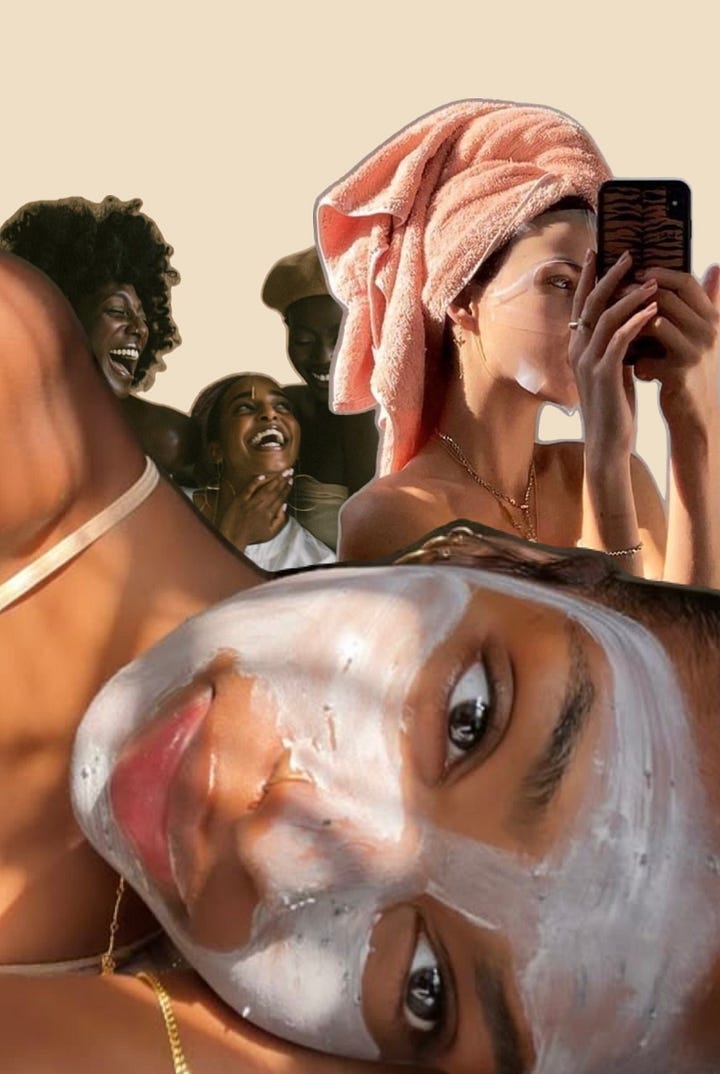
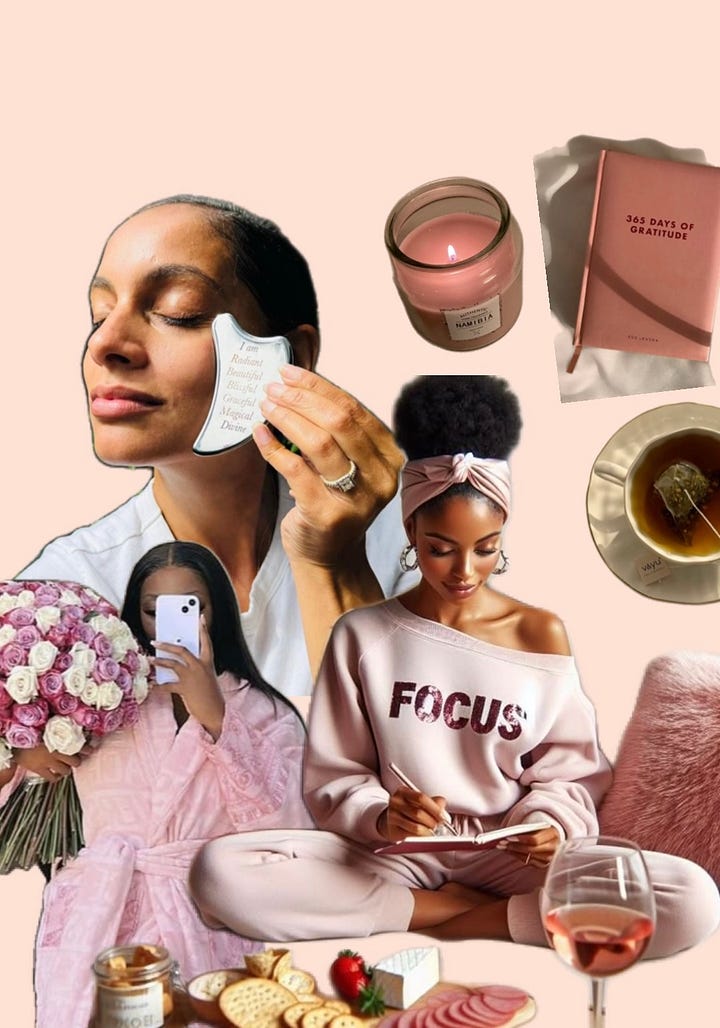
We can’t talk about opting out without talking about labor. And we can’t talk about labor without talking about race. Because for Black women, labor hasn’t been optional.
Not historically. Not structurally. Not emotionally.
During slavery, we were both the TradWives and day laborers—birthing children and raising others’, cleaning homes and surviving brutality. There was no softness. No sovereignty. No permission to rest.
After emancipation, that labor just shifted. Domestic work, sharecropping, nursing white babies while trying to keep our own families intact. In the 1950s and 60s—while White women were being sold the image of the ideal housewife—we were often the ones cooking the meals, scrubbing the floors, keeping those homes together. And then going home to do it all again, unpaid
We weren’t in the photo. We were behind the photo. Making the aesthetic possible.
Then came the 70s and 80s. Social welfare reforms. The war on drugs. The crack epidemic. The rise of the “welfare queen” trope—Black mothers vilified, surveilled, blamed for systems they didn’t build and couldn’t escape.
Throughout these eras, we were flattened into caricatures: The Mammy, always nurturing but never needing; The Sapphire, too loud, too angry, too much; The Strong Black Woman (SBW), praised for her resilience, punished for her softness.
We didn’t get to be at rest. We didn’t get to be soft. We didn’t get to opt out.
We’ve carried both the feminine and the masculine for generations—because we had to. We led households, raised babies, raised the community, put first generations through college, protected ourselves, showed up at work, showed up for others. Strength wasn’t an identity. It was a requirement. But that doesn’t mean we don’t want more. Softness is a homegoing. A return to whats always been ours.
But what started as rest and refusal has been repackaged again.
There’s a spectrum now. A slide. One that starts with independent women reclaiming rest—especially Black women, for whom soft life was never about aesthetics, but survival. Then came the shift. Soft girls emerged, often white or white-adjacent, and rest got rebranded into GRWM videos and Pinterest moodboards.
By the time we hit the “soft girl era,” the original intent had been flattened. And what’s at the far end of that spectrum?
The stay-at-home girlfriend. The Tradwife.
Where softness is no longer power—it’s performative. It’s submission dressed up as luxury and/or comfort.
Softness, in simple terms, becomes code for femininity. Not something you claim for yourself—but something assigned, based on how well you perform femininity for The Patriarchy. And once again, Whiteness becomes the image of ideal womanhood. As if history hasn’t already taught us who gets to rest… and who gets dismissed.
This is where soft girls and TradWife aesthetics—no matter how they’re branded online—miss the full story. Because when we see luxury retreats marketed as “softness,” or submission framed as “divine femininity,” many of us feel both drawn in and excluded.
So yes—we’re opting out too.
Softness isn’t surrender. It’s a shift in how we want to live.
We’re not abandoning ambition. We’re just refusing to grind ourselves into the ground to prove we belong. We’re still showing up. We’re still building.
We’re just doing it with more care—for ourselves included.
This is where (most) real women live.
Let’s be honest—most of us are not living in the extremes we see online. We’re not out here in designer milkmaid dresses making peanut butter and jelly from scratch. We’re also not disappearing into spa days in silk robes just to stay soft for the algorithm. We’re somewhere in the middle, trying to figure out what real rest, real choice, and real identity actually look like.
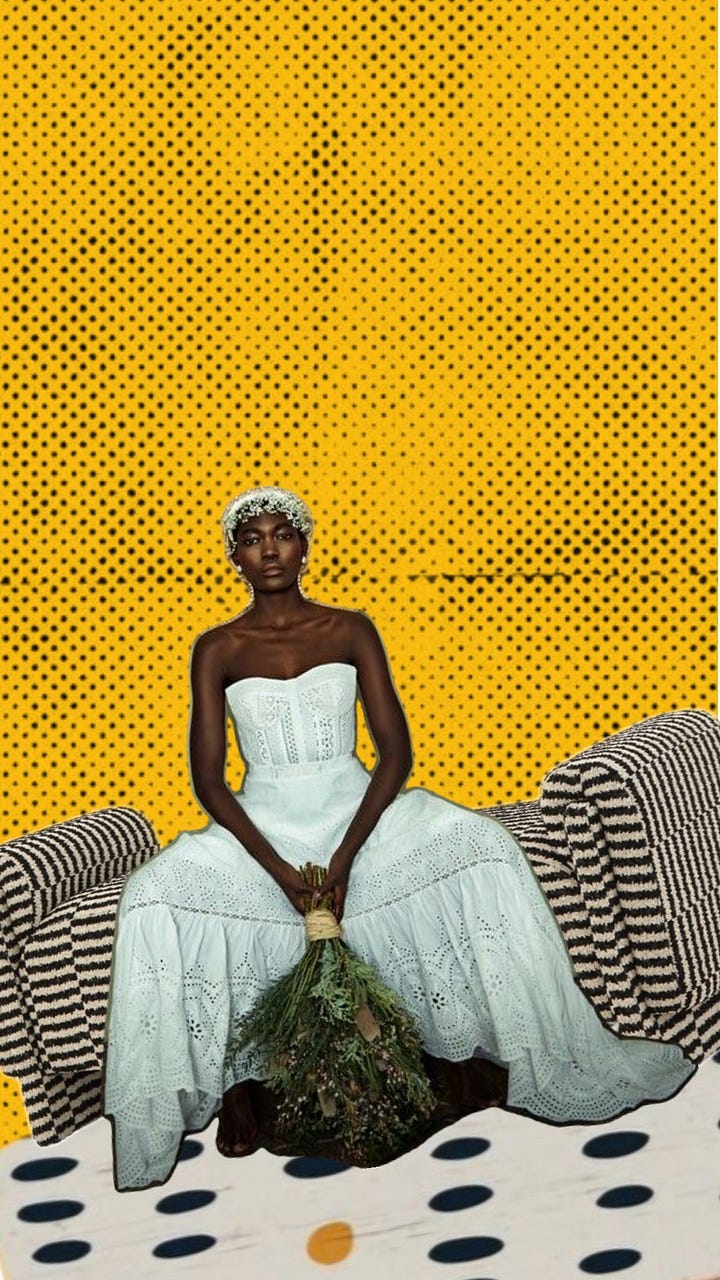
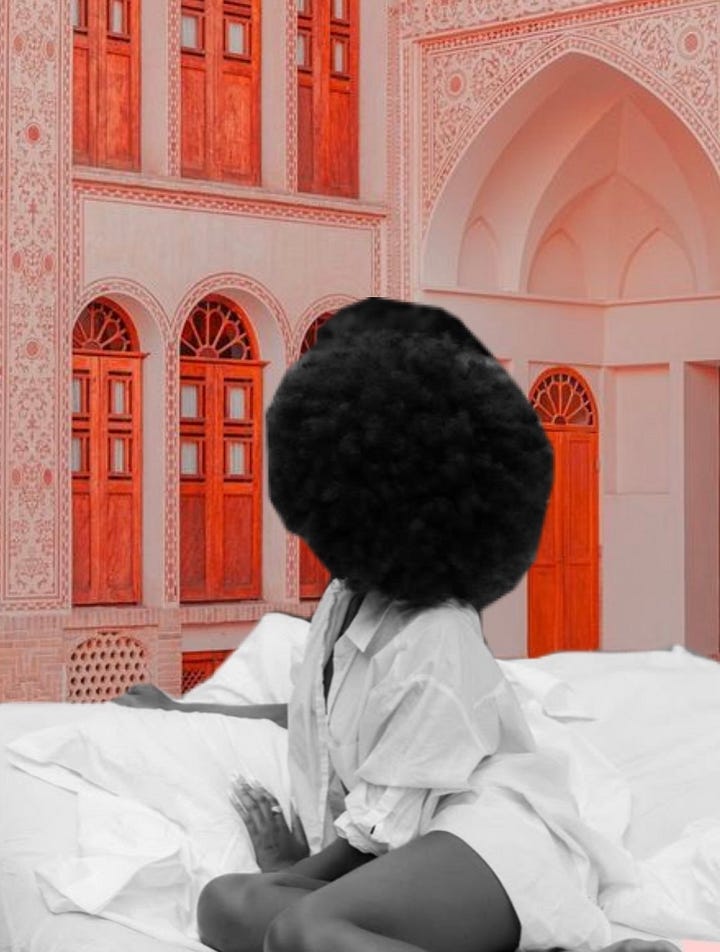
If you’ve read my work before, you know I’ve written about the third space—that in-between place where identity is negotiated, not handed to you. It’s where I’ve lived most of my life. Not this, not that. Not either/or. And what we’re talking about here feels like another version of that. A space that isn’t defined by aesthetics, or submission, or performance. A space where you don’t have to give up your ambition to be well, and you don’t have to perform wellness to be seen.
It’s not a catchall but it is a great frame of reference.
We’re allowed to want more than survival without feeling like we have to choose between extremes. There’s space between soft life and tradwife content—real space. A space where you can love domesticity and pursue your own dreams. Where you can care deeply for your family and still have an identity that isn’t entirely wrapped around them.
Take me, for example: I cook, I clean, I care for my people. I do a lot of things that might look “TradWife-adjacent” online. But I also travel with my girlfriends. I go on solo trips. I date my husband, but I also date myself. I’m not trying to reject structure—or submit to it either. I’m just trying to build a life that reflects what matters to me. I know I’m not the only one trying to find that space.
So yeah… I don’t know exactly where we land with all this—because it’s messy, and it’s definitely layered. But I do want to keep pulling at it. Do you see it though a different lens? I’d love to hear what you’re thinking! Xx, Mia





